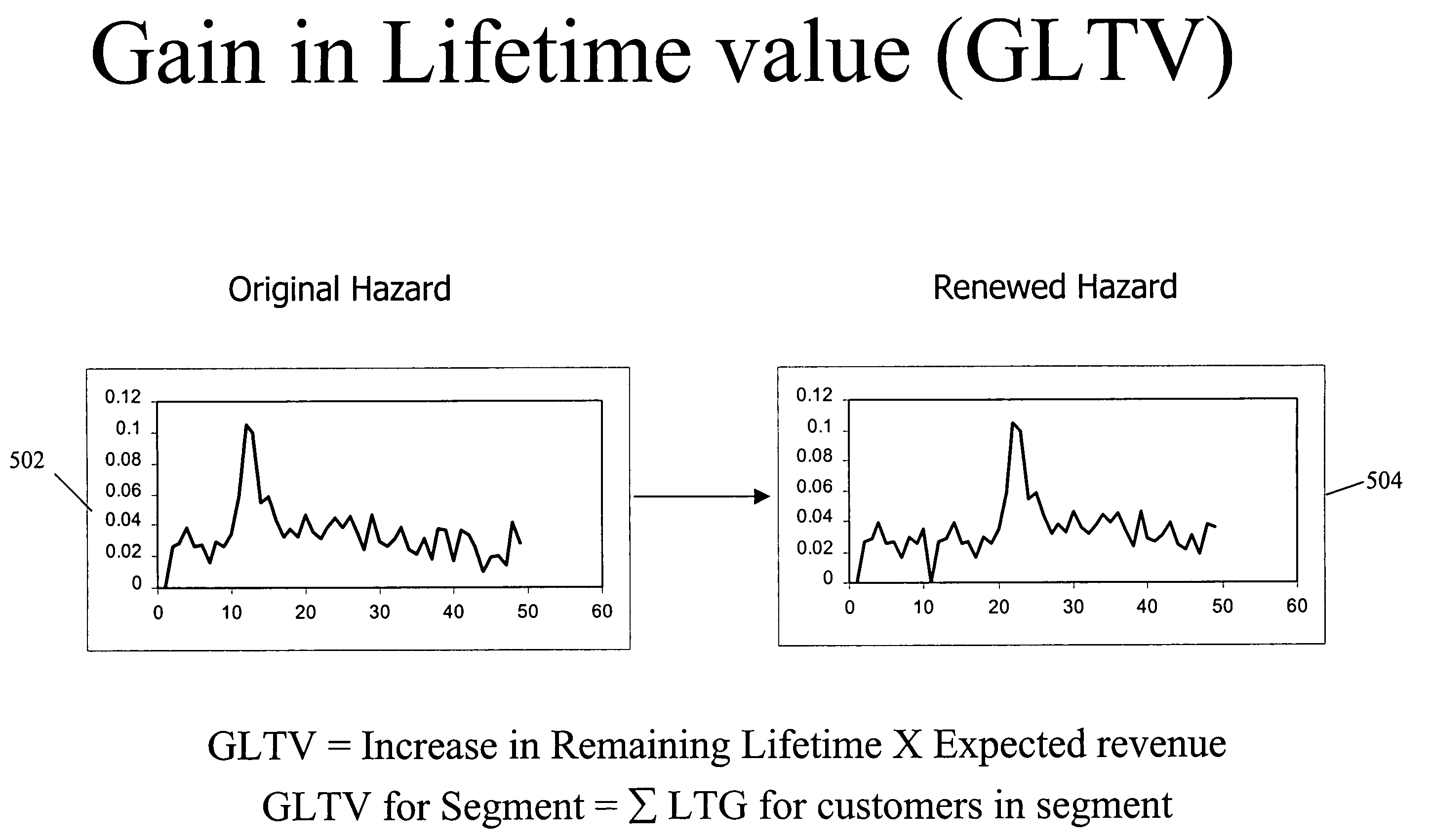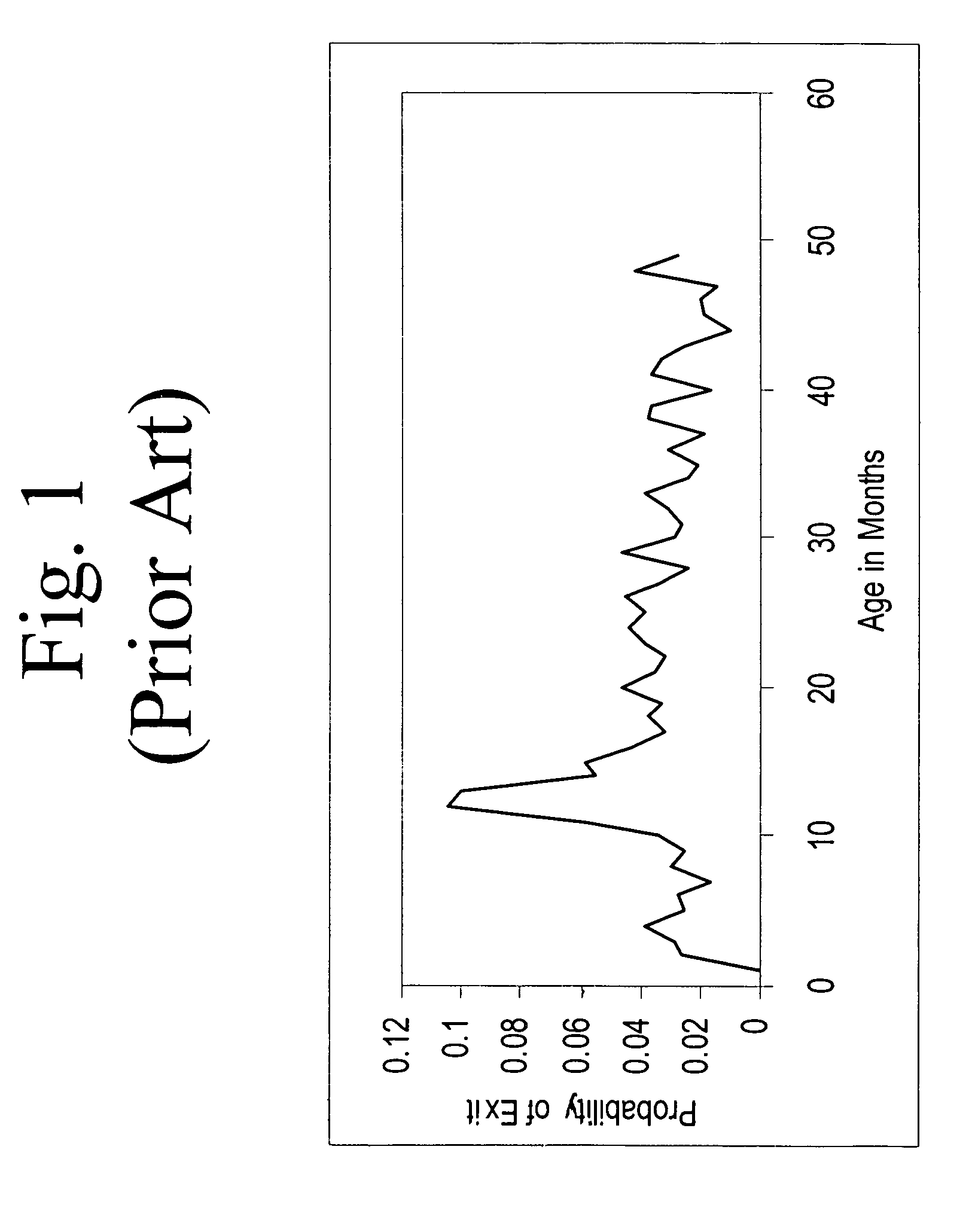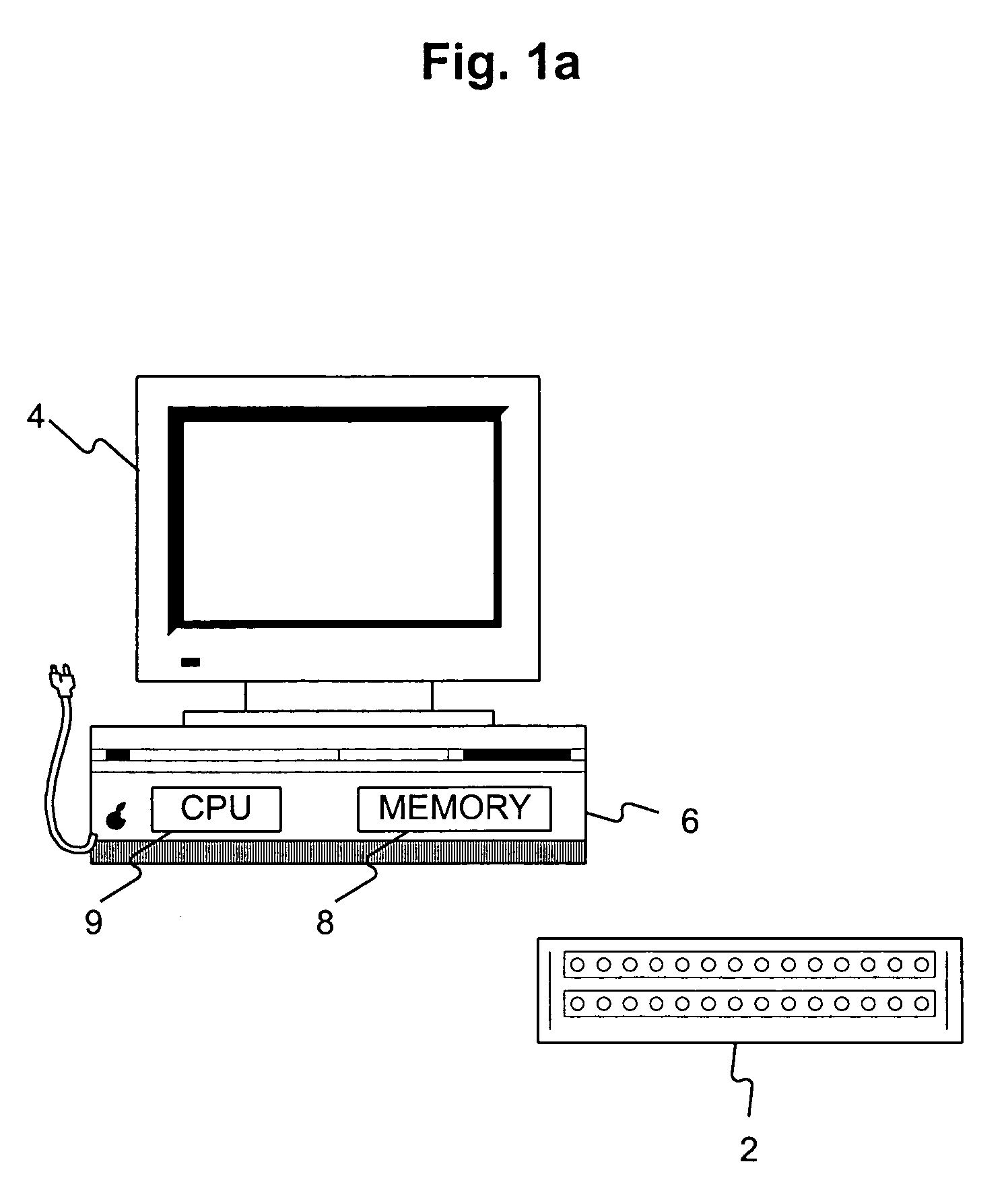Method for evaluating customer valve to guide loyalty and retention programs
a customer valve and customer technology, applied in the field of data modeling to guide loyalty and retention programs, can solve the problems of contract expiration, difficult to use this method to estimate the effect of covariates on hazard and survival functions, and waste time with customers who generate little revenu
- Summary
- Abstract
- Description
- Claims
- Application Information
AI Technical Summary
Problems solved by technology
Method used
Image
Examples
Embodiment Construction
[0024]Reference will now be made in detail to an implementation consistent with the present invention. Wherever possible, the same reference numbers will be used throughout the drawings to refer to the same or like parts.
[0025]Methods and systems consistent with the present invention provide for a neural network which is generated using functions and attributes from customer account information and is used to generate hazard functions from which expected tenure of a customer can be determined and marketing techniques can be focused. The analysis of these hazard functions can direct marketing and retention efforts and can be explained with the example of cellular telephone service. The present invention can relate to any business and its referral to cellular telephone service is merely used as an example.
[0026]FIG. 1a shows an example of a system in which the present invention may be implemented. The system comprises of an input device 2, display 4 and a computer 6 which includes a m...
PUM
 Login to View More
Login to View More Abstract
Description
Claims
Application Information
 Login to View More
Login to View More - R&D
- Intellectual Property
- Life Sciences
- Materials
- Tech Scout
- Unparalleled Data Quality
- Higher Quality Content
- 60% Fewer Hallucinations
Browse by: Latest US Patents, China's latest patents, Technical Efficacy Thesaurus, Application Domain, Technology Topic, Popular Technical Reports.
© 2025 PatSnap. All rights reserved.Legal|Privacy policy|Modern Slavery Act Transparency Statement|Sitemap|About US| Contact US: help@patsnap.com



